Have you ever found yourself scrolling through case studies, left uninspired and unsure how these narratives help drive sales or convince buyers to make a decision? Or maybe you’re a marketing professional, eager to craft compelling case studies for your sales team but unsure where to start? If you’ve nodded yes to either of these, then this article is tailored just for you.
There has been a shift in the Buyer’s Journey, where buyers conduct the majority of their research online before speaking to a sales rep.
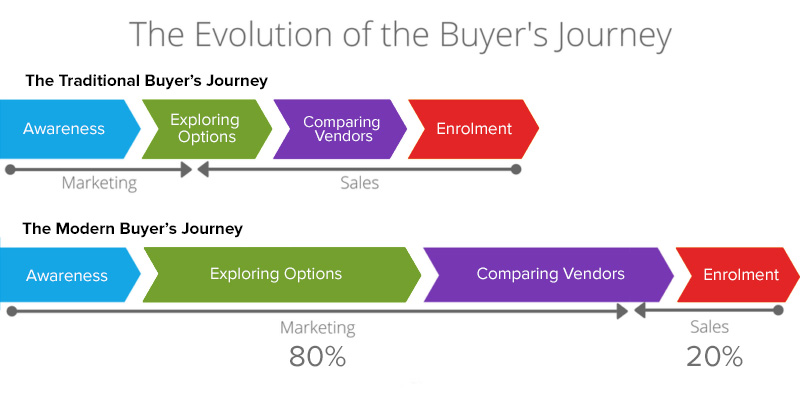
This presents the need for businesses to produce educational content, which ultimately builds trust and positions you as an authority in your industry.
While this is key to increasing traffic, leads and sales, producing educational content alone won’t cut it.
Your ideal buyers will ask questions like:
- “Can you prove you have the abilities and experience you say you have?”
- “Can you demonstrate that you’ve helped someone like us in the past and have gotten great results?”
- Can we trust that you’re going to deliver on your promises?”
This is where a case study comes into play. Case studies help bridge the gap between an unsure buyer and a raving fan who can’t wait to start working with you.
The problem is, where do you start with case studies and how can you assure they will be effective?
In this article, you’ll learn exactly how to create a case study that converts, so that you can build trust with your buyers and close more deals.
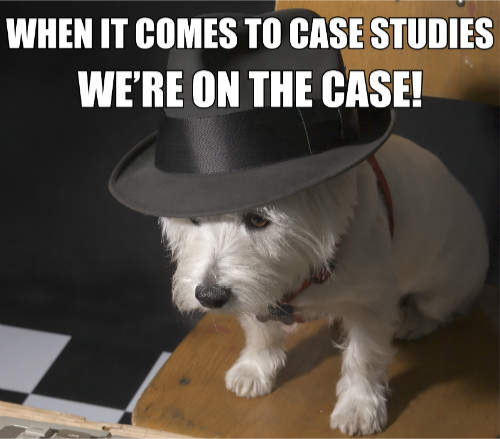
Why Do I Need a Case Study?
Before you set out to write a case study, you need to understand the purpose, because it will inform every decision you’ll make as you go through this process.
Understanding the true value of a case study is akin to unlocking a secret weapon in your sales and marketing strategy. While blogs, social media posts, and podcasts serve their purpose in creating awareness and fostering consideration, case studies propel potential customers into making a decision.
Picture this: a prospective customer is embarking on a journey to find the best solution for their problem. As they navigate through the sea of information, they are self-educating, and by the time they connect with your sales team, they are already 70% of the way through their journey. At this stage, they’re not just looking for a service or a product; they’re looking for a proven solution.
This is where case studies come into play. They offer solid evidence of your brand’s ability to solve similar problems.
It’s storytelling with a purpose, where the hero triumphs not just due to their own capabilities, but because they leveraged your product or service effectively.
This narrative not only affirms your brand’s credibility but also provides your buyer with the confidence that they are making the right choice.
Case studies go beyond being just pieces of content. They become trust-building tools that bridge the gap between consideration and decision, presenting a convincing argument in your favour.
They also play a significant role during the sales process, acting as a persuasive nudge that can help tip the balance towards sealing the deal.
Before you embark on crafting your case study, remember its ultimate purpose – to reassure your prospects that they are making the right choice in choosing you.
The Art of Picking the “Right” Case Study
Choosing the “right” client for your case study is crucial and, at times, even more important than the writing itself. The quality, relevance, and impact of your case study largely hinge on the subject you choose.
Think about it.
It’s like picking the main character for your story – their journey, their challenges, and their triumphs will be the narrative thread weaving through your case study.
Which client should I use for my case study?
A common misstep is to assume that the larger the client or the longer the engagement, the better the story.
This is not necessarily the case.
Whether it’s a brief or a long term project, all can serve as great case study material.
So, how do you figure out which is the “right” client story for your case study?
While successful case studies do share common characteristics, it’s the common pitfalls they avoid which define their success.
Here are three critical “red flags” to consider before choosing your case study:
- Unfinished Business: Case studies are not a medium for aspiration or potential. If a project is still underway, it lacks conclusive results that add credibility to your case study. Hold off until the story is complete and has a clear beginning, middle, and end
- Unsatisfied Clients: This goes without saying, but if the client isn’t delighted with your work, they are not case study material. It may seem like an obvious point, but it bears emphasising. Satisfaction with your delivered solution should not be a one-sided affair. Your client’s happiness is as important as your contentment with the project
- Absence of Measurable Results: A case study without concrete results is a ship without a sail. It’s pivotal to ensure you have robust, quantifiable data to support the story you’re weaving. After all, nothing validates your solution more than tangible proof of its success.
Before embarking on writing a case study, ensure the potential subject satisfies these three prerequisites. If it doesn’t, it might be best to set it aside for now.
Asking the Right Questions
Once you’ve selected the ideal case study subject, it’s time to switch on your detective mode and embark on a journey of information gathering.

You’ll need to seek answers to a multitude of questions before you can even contemplate putting pen to paper, and this may involve conversations with several individuals in your team.
While much of this information may be obtained from your team members, the value of conversing directly with the clients cannot be overstated. Their perspective provides unique insights and authenticates your narrative.
Your aim should be to gather exhaustive information covering the entire spectrum of the story. This information should ideally cover three parts:
- The client and their issue or objective
- The process of identifying and implementing the solution
- How the final results have altered the client’s situation
Here are some pivotal questions to guide your investigation:
- Who is the case study designed to appeal to, among your potential clients?
- What problem was your client facing that needed a solution?
- What reasons led the client to select you for the solution?
- How did you navigate the complexities of the problem?
- What was the ultimate resolution, how did you arrive at it, and what was the implementation timeline?
- What were the immediate benefits or results the client witnessed as a result of your work?
- What changes or improvements did your client observe over time?
- Are there any expected future outcomes the client anticipates?
- Do you have a testimonial from the client?
And here’s one research methodology you can follow to gather everything you need for your case study:
- First, gather information from team members through a Google Form
- Then hold an internal meeting with the team that collaborated with the client. The aim is to gather background information and begin sketching out the narrative
- Arrange a meeting with significant stakeholders from the client’s end. This allows you to gain their perspective, ask them about their experience, and request any data they can share
To assist you further in asking the right questions before crafting your case study, we have designed a free case study template equipped with a comprehensive list of questions to guide your information-gathering stage. You can access that here.
How Do I Write a Case Study?
So, you’ve picked the right client for your case study, and you’ve done your research. Now it’s time to write content for your case study.
The Old Way of Writing Case Studies vs The New Way
The Old approach of writing case studies:
- 20% Client background
- 60% Description of solution and what you did
- 10% Benefits of the solution
- 10% About your company
New approach of writing case studies:
- 10% Client background
- 50% Client issue, impact, and importance
- 40% Outcome of solution
The problem with the old approach is it focuses more on what you did than on why the client needed it.
A reader of the old approach will understand a little about the problem and a lot about what you did – but that formula isn’t aligned with how buyers make decisions.
Prospects will only part with dollars once they know the impact of what they are buying. And of course, if the issues you will solve aren’t urgent relative to other issues, then they’re not important enough to solve.
So, see how the issue, impact and importance framework raises the stakes and makes for a better case study format?
With that in mind, let’s take a look at some guidelines to follow when writing your case study.
Writing Your Case Study
The strength of your case study lies in your capacity to weave a captivating narrative. It requires the perfect blend of concise language, persuasive writing, and relevant details, all while focusing on the client’s perspective and experience.
Let’s take a look at some guidelines to follow to write a high converting case study.
1. The Art of Minimalism
When recounting a project you’re proud of, it’s tempting to fill the narrative with every meticulous detail.
However, in a case study, this can appear as over-editorialising, possibly suggesting you’re attempting to overcompensate for insubstantial results. Instead, you should use streamlined storytelling and clear language.
Every piece of information should contribute towards the central thesis of your case study; if it doesn’t, it needs to be eliminated.

2. Avoid Giving Your Opinion
The only opinion that matters in a case study is your client’s, not your own.
Ensure you resist the allure of excessive adjectives and adverbs that aim to sway opinion.
If you’re presenting a branding project, for instance, don’t describe the final logo as “beautifully designed.”
These subjective evaluations should be restricted to client testimonials, as their perception of your work is what truly counts.
3. Harnessing the Power of Persuasion
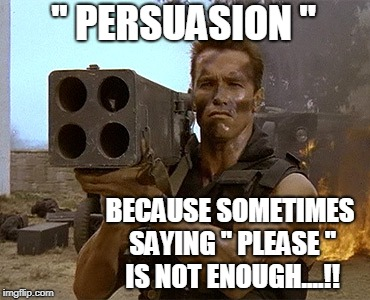
Your case study isn’t merely a descriptive account; it’s an instrument of inspiration, designed to motivate potential clients to action.
Your writing should make your clients think “Hey, that sounds just like me”.
How do you achieve this effect? There are a few things you can do.
Narrate the client’s story in a manner that resonates with potential customers
Use specific qualifiers related to the client’s industry, size, challenges, objectives or pain points that enable readers to identify with the situation.
For example, when illustrating the initial problem your client faced, you might say “Despite the loyal customer base and fantastic word-of-mouth marketing, her bakery just couldn’t seem to attract enough new customers to sustain growth.”
By doing this you’re getting your audience to empathise with your client’s problem, and when you get your buyer to put themselves in your client’s shoes, by the end of the case study they’ll be dying to work with you. Why?
Because they’ll desire to experience the same positive benefits that your client experienced.
Analogies and metaphors to be used as comparison tools
Analogies and metaphors can make your narrative more digestible by drawing parallels with concepts your readers are familiar with.
But beware of clichés; they dilute the originality of your story.
Use power verbs to compel action
Use compelling power verbs helps you compel your reader to take action. Power verbs drive momentum, suggest results, and leave a lasting impression. They are the polar opposite of passivity.
Here is a comprehensive list of 185 power verbs that you can use.
Evidence and testimonials
Illuminating your narrative with concrete data, client quotes, and testimonials not only adds credibility but also vividly demonstrates the effectiveness of your work.
Proofreading
After crafting your compelling narrative, remember the last critical step—proofreading.
It ensures your case study is not only persuasive and relatable but also free from any linguistic or factual errors.
Designing Your Case Study
Upon crafting an articulate and persuasive case study draft, the next step is to breathe life into it through design.
It’s at this juncture you must determine the format—should it be a PDF for sharing with bottom-of-the-funnel prospects? Should it be a webpage? Does it need to align with previous case studies in your system? Once you determine this, it’s time to start the design.
The design outcome largely depends on your brand’s visual standards, but there are some universal design tips that you should consider, irrespective of your brand guidelines.
1. Embrace the Power of Whitespace
Whitespace, often referred to as negative space, is a powerful design tool. It helps to declutter your design and enhances readability by separating different elements of the page.
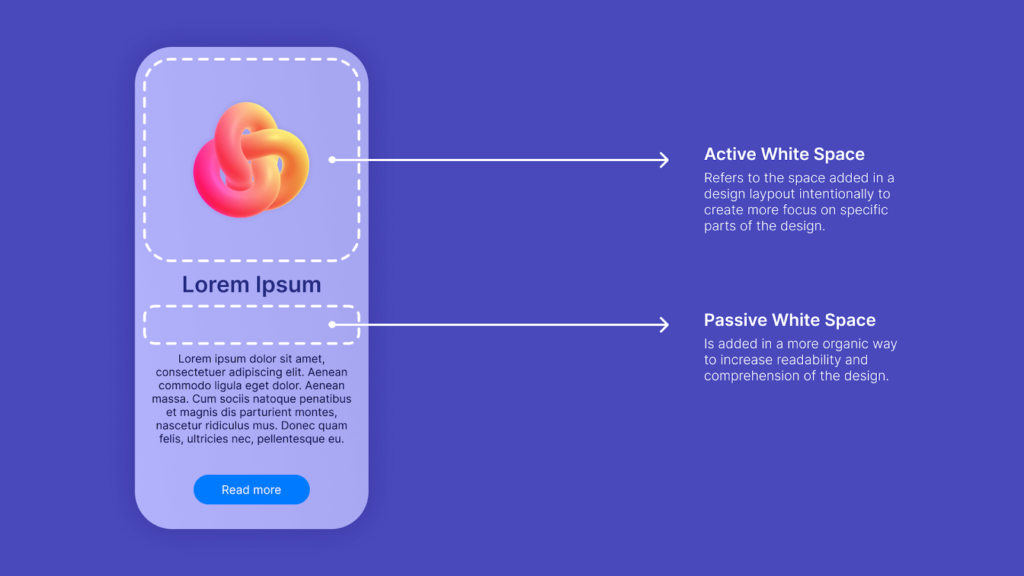
2. Visuals are Key
Engaging visuals not only capture attention but also help to break down complex information, making it more digestible.
They add colour, excitement, and a level of engagement that text alone cannot achieve. Think infographics, relevant images, or even video testimonials.
3. Diversify Your Textual Elements
Avoid long, intimidating blocks of text by incorporating headings, subheadings, quotes, and bulleted lists.
This not only improves readability but also helps to highlight key pieces of information, making your case study more scannable for those short on time.
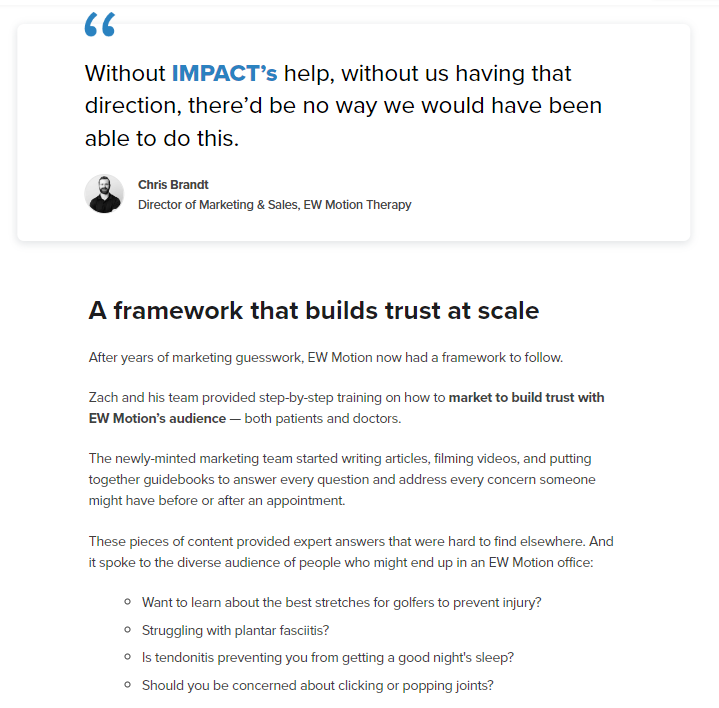
4. Spotlight Essential Data and Testimonials
Make sure to visually highlight key data points and quotes that encapsulate your success story as this makes them more memorable to the reader.

The design of your case study holds equal weight to the copy. An eloquently written case study loses its persuasive power if marred by unattractive or confusing design.
Your effort in creating compelling content should be matched by an equally appealing visual presentation.
Moreover, your case studies should be readily accessible to your audience. They serve as tangible proof of your success and should be featured prominently on your website.
Remember, your case study is not just a testament to your work—it’s your persuasive pitch to your future clients.
Incorporating Video into Your Case Study
Video brings a depth to case studies, fostering trust and accelerating the sales cycle. At RedPandas, we’ve found seven types of video that help increase traffic, leads and close more deals.
Of these seven video types, one in particular is relevant to case studies – Customer Journey Videos.
This video type’s effectiveness stems from its focus: the customer’s journey.
Unlike a video testimonial, a customer journey video weaves a compelling narrative starting from the onset of the client’s problem, through its peak, the solution’s implementation, and to the resulting transformation.
Here’s an example of a customer journey video.
The true power of a customer journey video lies in its ability to spotlight the client as the hero of their story.
Yes, you play a critical role as the guide, but the video should emphasise how the client bravely confronted their challenge, chose your solution, and emerged victorious.
In doing so, prospects will identify with the client, envisioning themselves as potential heroes in their own narrative.
By showcasing the journey, you’re not just telling prospective clients about your service or product—you’re showing them the transformative potential it holds for their business.
Ultimately, a well-executed customer journey video helps humanise your case studies, making them not only more engaging but also more persuasive.
So, What’s Next?
Now that you know how to craft a case study that converts, you’ll want to get feedback on your case study and monitor its performance over time.
As you gain data on your case study’s success, you can begin to improve your case studies over time.
If you want to help your team close more sales deals, the next step is to learn about what we call ‘Assignment Selling’; a sales tactic that has proven to increase close rates and shorten the sales cycle.














